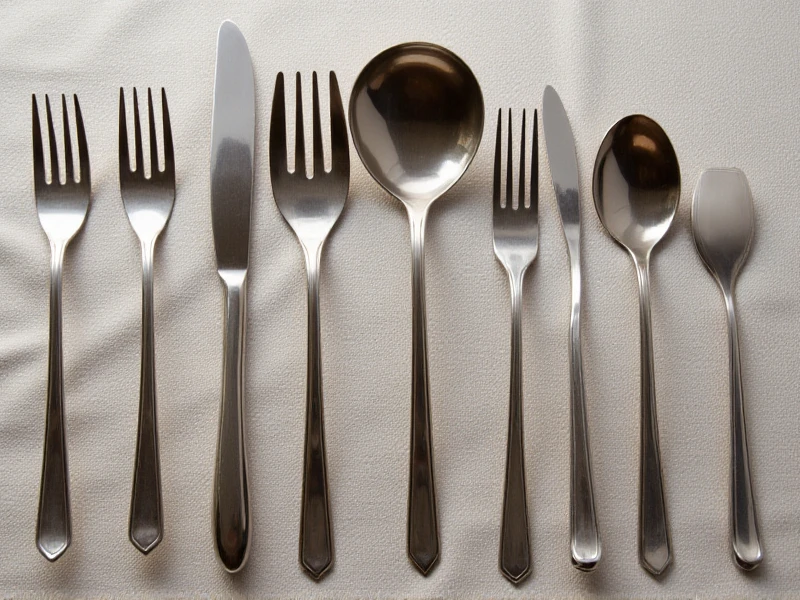Beyond the Fork: Choosing Utensils That Elevate Your Kitchen Game
2025-06-04

Utensils. They're the unsung heroes of every kitchen, the silent partners in every culinary triumph, from scrambling the perfect eggs to simmering a complex stew. Far more than just basic tools, the utensils you choose directly impact your cooking efficiency, the safety of your meals, your comfort, and arguably, the final taste of your creations. Let's delve into the fascinating world of kitchen utensils, exploring their evolution, importance, common types, materials, and how to choose and care for them to truly transform your cooking experience.
A Brief History: From Stone to Silicone
The story of utensils is the story of human ingenuity. Our earliest ancestors used rudimentary tools like sharp stones for cutting and sticks for stirring. Ancient civilizations like the Egyptians and Romans developed more specialized utensils from wood, bone, and metals like bronze and iron. The evolution continued through the ages, with significant leaps during the Industrial Revolution, enabling mass production. The 20th century brought revolutionary materials like stainless steel, nylon, and eventually silicone, expanding our options dramatically. Today, our utensil drawers are a testament to centuries of refinement aimed at making cooking safer, easier, and more precise.
Why the Right Utensils Matter (It's Not Just About the Cooking!)
Choosing quality utensils isn't just about aesthetics; it's fundamental:
1. Protection for Your Cookware: Using a metal whisk on a non-stick pan spells disaster. Scratched surfaces compromise the non-stick coating and can even release harmful chemicals. Using the correct wood, silicone, or nylon utensil prevents expensive damage and ensures cookware longevity.
2. Food Safety & Hygiene: Non-porous, easy-to-clean materials like stainless steel, heat-resistant silicone, and certain plastics inhibit bacterial growth much better than materials like wood or bamboo that can harbor bacteria if not meticulously cared for. Look for utensils that are dishwasher safe for effortless sanitation.
3. Cooking Efficiency & Precision: A flimsy spatula fails at flipping delicate fish, a dull knife makes chopping veggies dangerous drudgery, and poorly designed tongs are frustrating. Sturdy, well-designed utensils designed for specific tasks make cooking faster, safer, and significantly more enjoyable.
4. Comfort & Ergonomics: Long hours prepping deserve comfort! Utensils with ergonomic, non-slip, and heat-resistant handles reduce hand fatigue and prevent burns, making even lengthy cooking sessions manageable.
Exploring the Utensil Arsenal: More Than Spoons and Spatulas
The modern kitchen boasts a diverse range of utensils:
Stirring & Serving: Spoons (slotted, solid, wooden), spatulas (turners, scrapers), tongs, ladles.
Prepping: Knives (chef's, paring, serrated), peelers, graters/zesters, garlic presses, can openers, kitchen shears, measuring spoons/cups.
Specialized Tasks: Whisks (balloon, flat), mashers, rolling pins, pastry brushes, basters, colanders/strainers, pizza cutters, egg separators.
Modern Additions: Silicone scrapers, fish turners, spider skimmers, avocado slicers, herb strippers.
Material Matters: Pros and Cons
Your utensils' material significantly impacts performance and cookware safety:
1. Stainless Steel: Super durable, non-reactive (won't alter food taste), great heat resistance. Ideal for stirring vigorously, whisking, solid tongs. Downside: Not suitable for non-stick surfaces; cold handles can conduct heat.
2. Silicone: Heat-resistant (often to very high temps), flexible, non-stick safe, non-porous (hygienic), easy to clean. Great for spatulas, scrapers, whisks, basting brushes. Downside: Can sometimes retain odors; not ideal for high-heat searing where direct flame contact might melt it.
3. Nylon & Plastic: Affordable, non-stick safe, lightweight. Good for basic tasks. Downside: Less durable, can melt at high temperatures, prone to scratches trapping bacteria, and can stain easily.
4. Wood & Bamboo: Natural, non-scratch for non-stick, aesthetically pleasing, comfortable grip. Downside: Requires diligent hand washing and drying (dishwasher can warp/crack them), can absorb odors/stains and harbor bacteria if not meticulously maintained, not as heat-resistant near open flames.
5. Coated Metals (e.g., Nylon/Plastic/Silicone coated steel): Combines durability of metal with non-stick safety. Downside: Coating can eventually chip or peel.
Choosing Your Perfect Utensils: Key Considerations
Before adding a new utensil to your drawer, ask:
1. Cookware Type: Do you primarily use non-stick? Prioritize wood, silicone, or nylon. Heavy cast iron or stainless? Metal tongs or spoons work well.
2. Cooking Needs: What do you cook most? Baking requires different tools than stir-frying. Focus on expanding the tools for your routine tasks.
3. Durability & Longevity: Invest in well-made utensils. Quality metal or heat-resistant silicone might cost more initially but lasts far longer than flimsy plastic.
4. Usability: How does the handle feel? Comfort is crucial. Is it heat-resistant? Can it go in the dishwasher? Is it easy to clean thoroughly? Weight and balance matter too.
5. Storage: Do you have ample drawer space or will you hang them? Consider length and handle design.
Caring for Your Culinary Companions
Proper care extends utensil life and maintains safety:
Immediate Cleaning: Don't let food dry on. Rinse immediately after use.
Dishwasher vs. Hand Wash: Follow manufacturer instructions. Generally, stainless steel and most high-quality silicone are dishwasher safe. Wood, bamboo, and cheaper plastics always require gentle hand washing and thorough drying.
Drying Thoroughly: Especially for wood/bamboo, standing water leads to warping and cracks. Ensure all crevices (like tong hinges) are completely dry.
Regular Inspection: Discard utensils that are cracked, chipped, melted, have peeling coatings, or deeply stained/scratched where bacteria can hide. Wooden utensils showing deep cracks should be retired.
The Future of Utensils: Innovation on the Menu
Just like the rest of our kitchens, utensils are evolving. We see increased focus on sustainability (recycled materials, ethically sourced wood/bamboo), clever multi-tasking designs to save space, smarter ergonomics for diverse hand sizes, and even high-tech options like integrated temperature sensors.
Choosing the right utensils is an investment in your culinary happiness. They are extensions of your hands in the kitchen. By understanding their function, choosing quality materials suited to your cookware and cooking style, and caring for them properly, you equip yourself not just to cook, but to cook beautifully, safely, and efficiently. Ditch the flimsy, worn-out tools. Discover how the perfect utensil can truly elevate your next meal. What's your favorite must-have kitchen utensil? Share your indispensable tools with us!
Category: